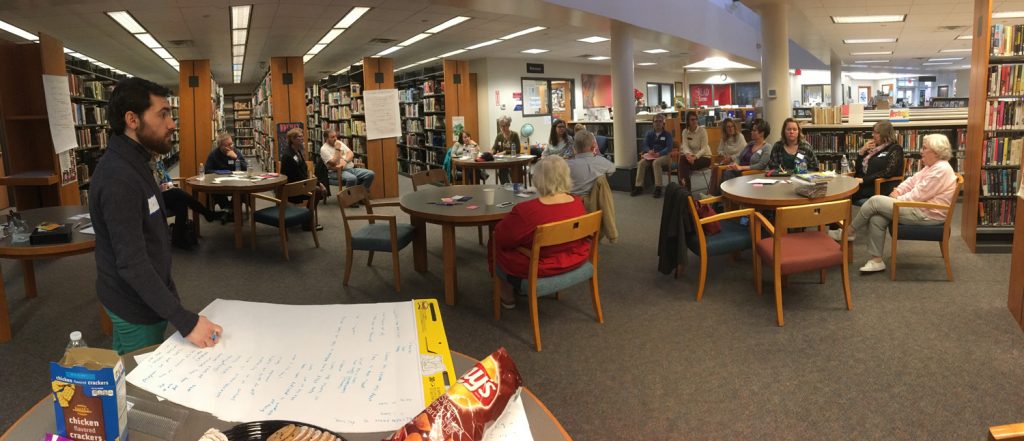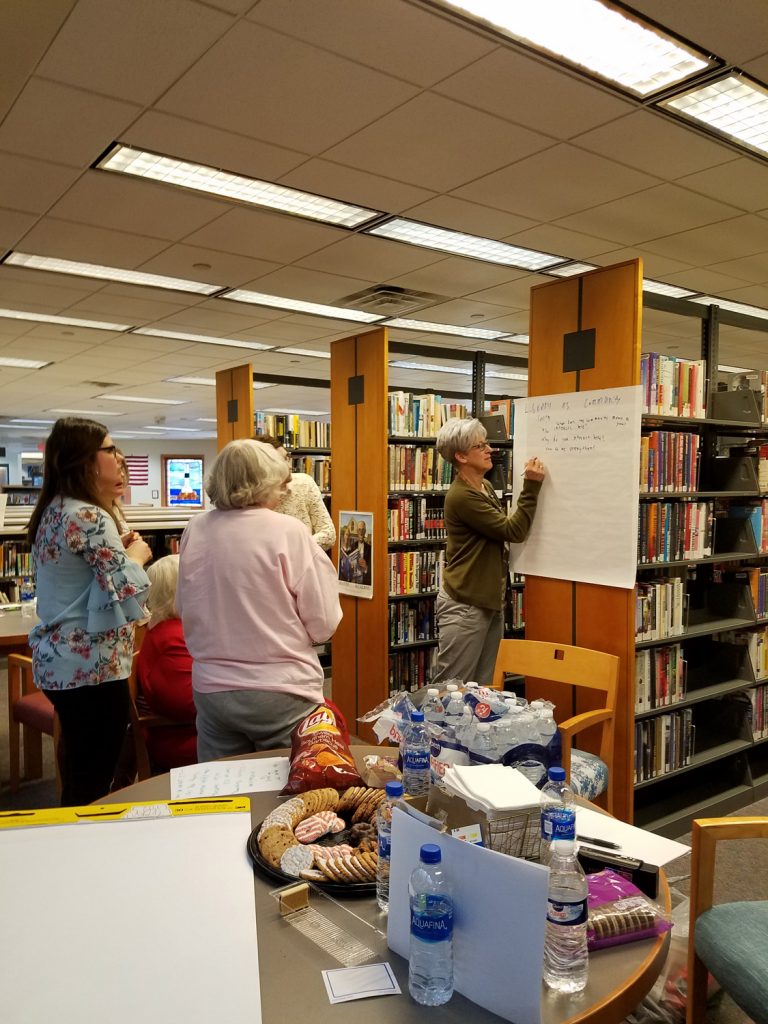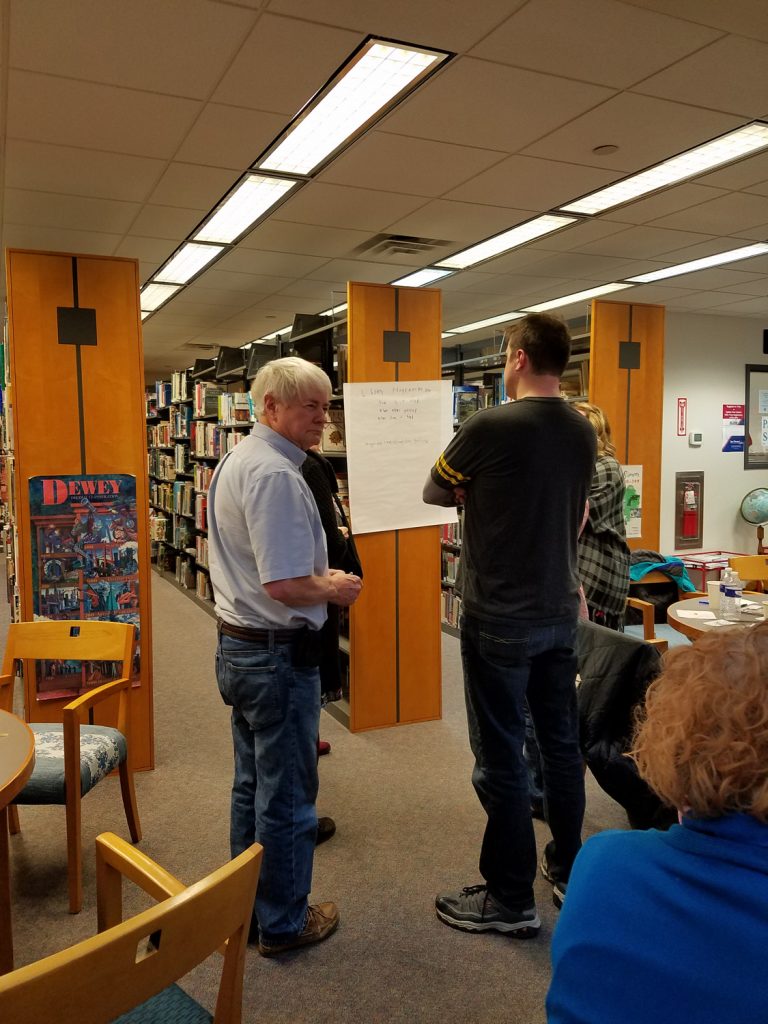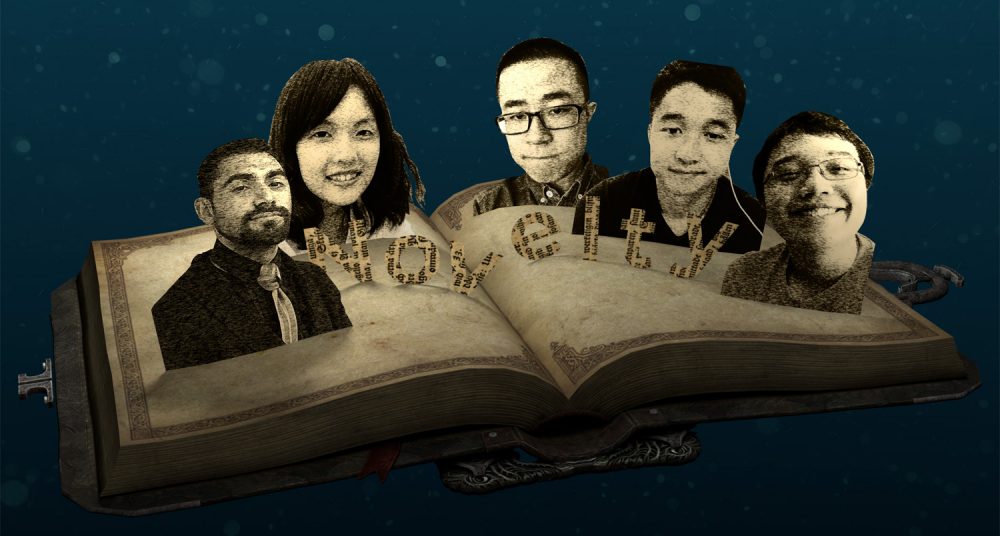BY MAI AO
It was a long drive. Two hours up north to the edge of the Great Lakes. There we were warmly greeted by our clients, the directors from Ashtabula County’s ICAN libraries. We sat down for a brief snack while being interviewed by a kind old lady who avidly took notes of who we were and where we came from. The enthusiasm was palpable from both sides. Waiting for us was other board members and around twenty patrons. They were all invited into participate in our first co-design session. The activities were called “co-design” because it wasn’t just a way for us to survey the information we wanted. It was a collaborative approach that deemed the inputs and involvement of the target audience integral to the design. Jacob was our team’s expert in facilitated discussions. Through a series of carefully calibrated activities, he led the librarians and patrons to open up about their relationship with the library, their experience using its services. People voiced their thoughts on libraries’ values to the community, while also addressing the changes brought by technology. It was a fruitful and candid conversation that I think surprised both parties to some extend.

We noted that libraries play an crucial role in the communities there. It is the place people come to meet others, to make friends, to discover what other people reading, and even better, to engage in a variety of fun programs that enrich people’s lives. People also visit libraries for civic information, personal assistance, or training programs. Those who frequent the library adore it. But it is their concern that still many neighbors, even civic leaders, do not even have a library card. The younger generation apparently do not have the same experience with libraries as their parents or grandparents’ generations. The library leaders want children nowadays to still understand how to build a relationship with their local libraries. It would be a terrible shame, as they pointed to us, if younger people of our time were to grow up without knowing how to benefit from libraries’ rich resources.


The center of our later discussions moved on to the concrete steps we could take, to improve libraries’ bond with its community. We highlighted several key topics for patrons to brainstorm ideas together with the librarians: library and community, personable service, digital resources, and library programs. It became clear to us, as the talks went on, that a lot of the improvements could be implemented in a low-cost way by simply doing things differently: for instance, librarians could try to have more floor presence; information about the libraries’ resources could be printed on the back of the library cards, etc. Then, there was how we came in. Five students, four months. We could direct our efforts to a specific task with high priority and a certain degree of technical challenge. So we asked our clients: What would it be? Their answer: Teens!
No problem. Let’s get this started.
